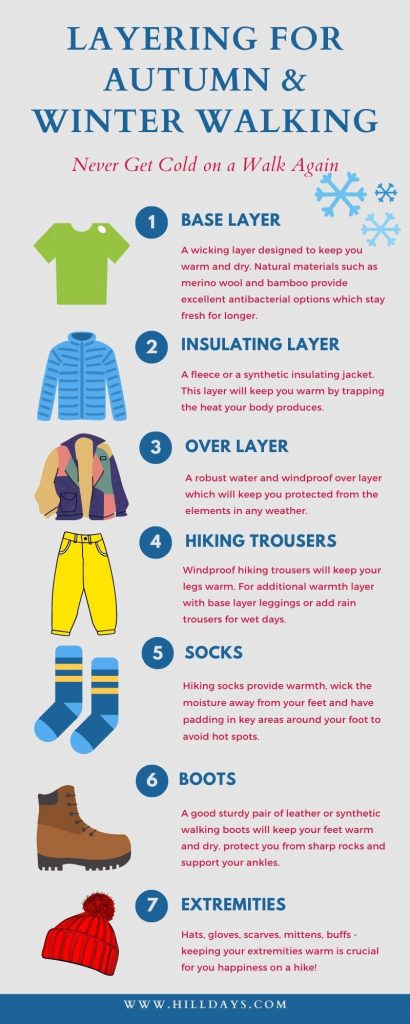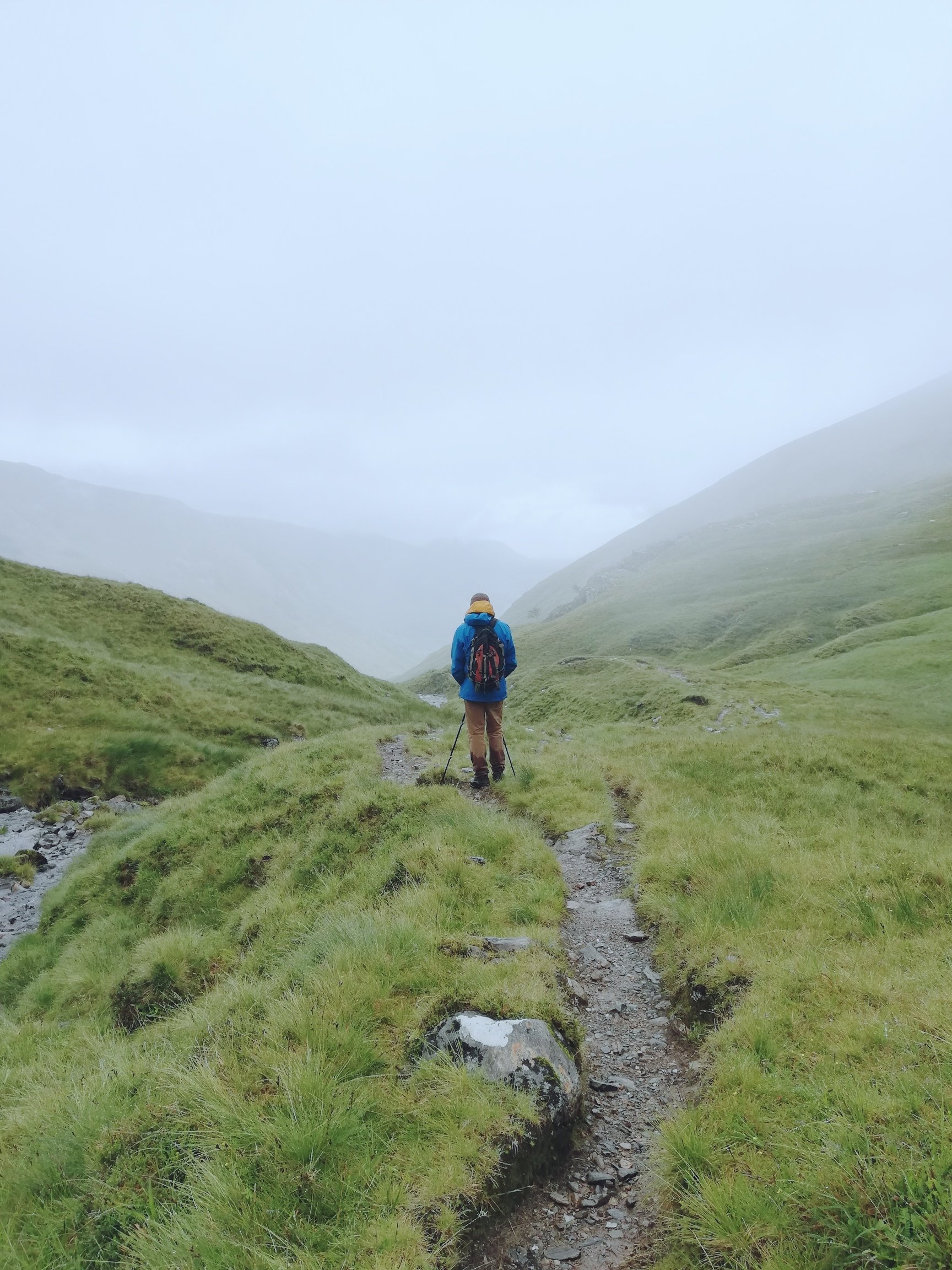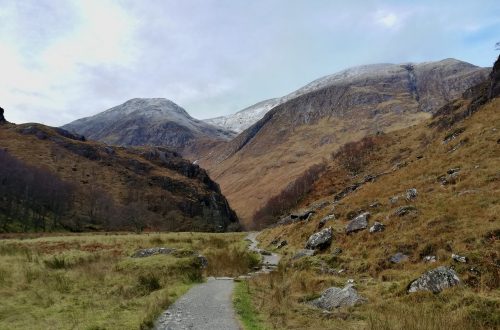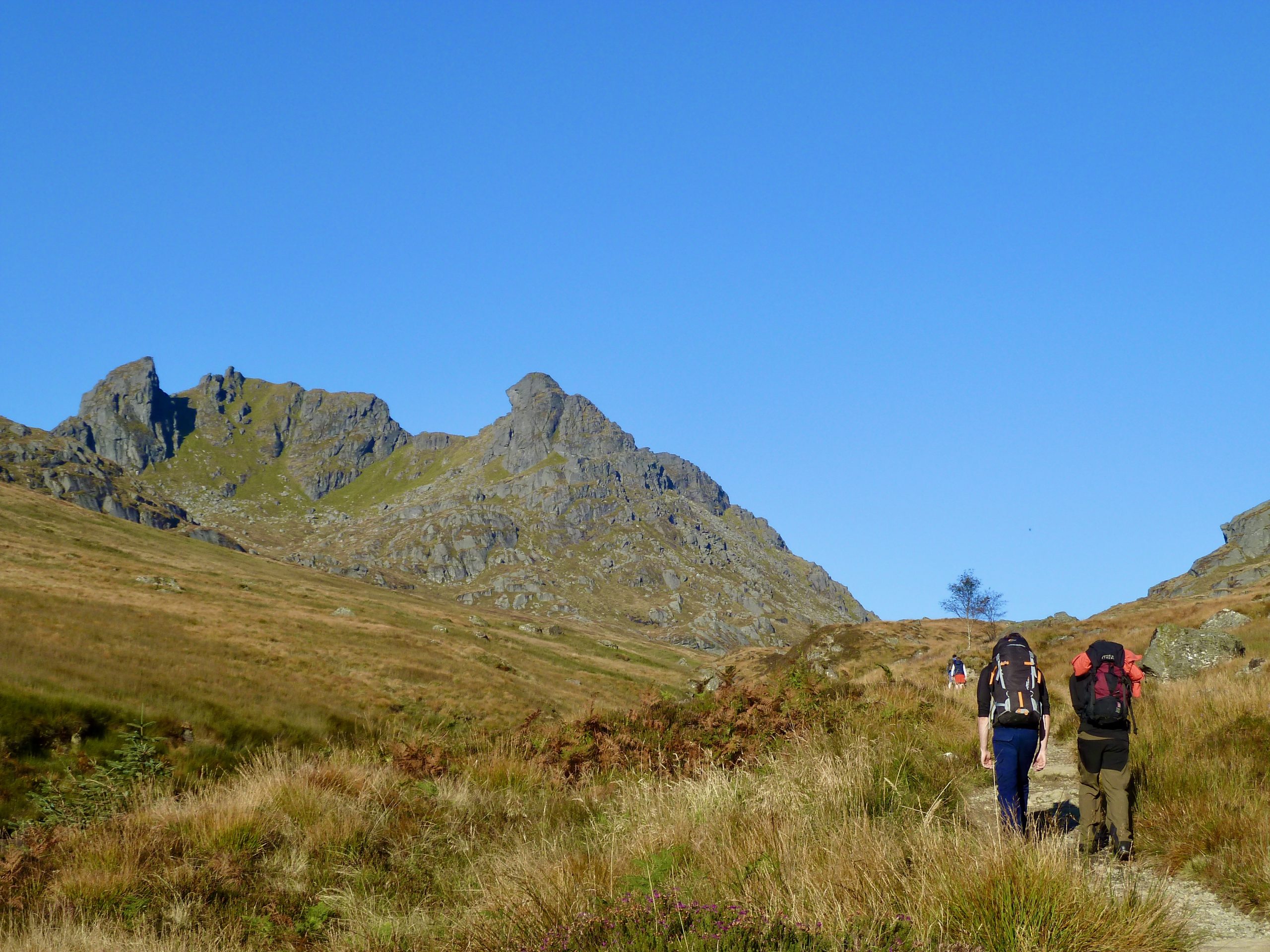
Clothes for Cold: How to Layer for Autumn & Winter Walking
With the temperatures quickly plummeting as the autumn approaches now is the time to think about your layers. Say goodbye to warm evening walks and no extra layers in your backpack. Instead it is time to prepare for anything the weather might throw at you. At this time of year, you can easily experience hailstorms and beautiful sunshine within the space of an hour. The effect of the wind on you will increase as the temperatures drop and it becomes ever more important to get your layers right. Getting caught out on the hills with the wrong clothing will not only make you have miserable time – it can also risk your safety, and the safety of the others in your group. Therefore, read on for how to choose the right layers for winter walking!
There is no bad weather – only bad clothing?

Base Layers
All good layering systems start with a set of thermals. And when it comes to staying toasty on stormy autumn hikes, there is nothing better than old fashioned long johns. With different fabrics and a wide price range to choose from, you will not be short of options. However, choosing the right thing for your needs is important. The excellent news is that good thermals do not need to be expensive! However, it is important to pay attention to the materials. I recommend choosing merino wool or merino wool blended with a synthetic material. Merino is excellent for keeping you at a comfortable temperature, it is wicking and has natural antibacterial properties. Additionally, it does not get nearly as smelly as synthetic options! Another natural material worth considering, especially if you usually get quite warm while walking, is bamboo. I love to wear bamboo base layers especially for trail running in colder temperatures!
It is important to have your thermal layer directly against your skin. So, don’t be tempted to add extra layers under them. This is a crucial bit of information people often miss when it comes to underwear! Nothing cools you down quicker than sweat drenched cotton underwear under your base layers. For this reason, many people opt for no underwear at all for hiking. If this option is not for you, look for thermal underwear. You heard right – you can get merino underpants too – and they aren’t even itchy! Equally sports underwear and bras can work well as long as they are wicking and designed to keep you dry. It is worth investing a little bit of research in this area as a small change in your layering can make a huge difference in you comfort and warmth during the day!
Socks
Finally, as every hiker knows, good socks are very important for your overall happiness on a long hike. Not only do they help you to avoid blisters but changing into a dry pair of socks in camp or even mid-hike can save the day. Everyone’s feet are different, and therefore it is important to put some effort in finding what suits you. Unfortunately, socks as a part of a blister management system would fill a whole other blog post. (But do let me know in the comments if this is something you would be interested to read about!)
However, here we are focusing on socks as a part of your layering system for cold weather walking. Again, you will not go wrong with mid- or heavy-weight merino wool hiking socks. Merino really is the answer for almost everything when it comes to warmth. Good hiking socks can seem very expensive, but they really make a difference. Unlike normal socks, hiking socks have extra padding in key areas of the foot, designed to cushion the foot during long days out. Good hiking socks should also be breathable, especially if your feet have the tendency to get sweaty. If your feet get cold in the winter months, you could also look into knee-high mountaineering or skiing socks which eliminate the cold area many people get on their shins.
Middle/Insulating Layer
The market for technical middle layers has exploded in the recent years with a multitude of different fabrics and designs. However, most people still rely on a simple fleece top. A fleece jacket or a pullover is a reliable layer which keeps you warm and is quick drying. Brands like Mountain Warehouse, Regatta and Craghoppers produce cheap and functional options. Additionally, for an insulating layer you can get different synthetic (primaloft) jackets, down jackets, soft shells and windbreakers. So depending on your budget and the amount of cold weather walking you are planning on doing, it might be a good idea to have a look at the different insulating layers. They are, after all, a key part of your layers for winter walking.
Which layer to choose comes down to the conditions you are planning to hike in on the day and what other layers you will be wearing. On a dry day wearing a base layer top, fleece and a windproof primaloft jacket may work well. But on a rainy day you might opt for a base layer, fleece and a waterproof over layer. Or if it is colder weather you might swap the fleece for a primaloft layer – or wear both! Therefore, it is impossible to give precise advice for the ideal middle layers and you will soon come to realise that it is good to have a few options available. It is good practice to always winter hike with an extra warm layer in your rucksack anyway to throw on for lunch stops or in case of emergencies. A good rule of thumb to remember is that down only works when it’s dry. So, if there is a chance you might get wet on your walk, choose a synthetic insulating jacket instead.
Layers for your legs
When it comes to middle layers for your bottom half – there is a lot of personal preference. Many people opt for wearing waterproof over-trousers directly over base layers. If this does not feel warm enough – or you prefer a more breathable option – dry layering a pair of leggings or walking trousers over base layers. For those who tend to get very cold legs while walking, a pair of fleece trousers under waterproofs might be a good solution. The features I look for in hiking bottoms, whether it is leggins or trousers, are reinforced knees and bum, decent pockets, breathable fabric and a cut which allows me to move freely.
Over Layer
This is the layer which will protect you from the elements and keep your other layers dry. A good waterproof jacket will block out not only rain but also even the coldest of winds. Don’t be fooled to buy one of those ‘showerproof’ or ‘water repellent’ jackets as they are not designed for this purpose. What you need is a waterproof which will keep you dry even in persistent rain. GORE-TEX (which now comes in many different variants) is the classic choice for a waterproof material. However, many outdoor brands now have their own waterproof alternatives, which are often just as effective as GORE-TEX.
It is equally important to have a decent pair of waterproof trousers. There are several features to look for, and one which you will certainly appreciate during autumn showers is having zips up the sides of the trousers. Make sure that these open enough to allow you to put the trousers on while wearing you boots! Equally, having either vents or zips that open from both the top and the bottom can be handy to allow for extra ventilation. While these tend to be a little less popular nowadays – you might also want to consider getting a pair of gaiters. Especially practical for walking through wet grass (but not wanting to wear your waterproof trousers), in heavy rain or in snow. They keep water from entering into your boots from the top. And therefore, will keep your feet warm and dry a bit longer.
Extremities
Hats, gloves, buffs, headbands, mittens… when it comes to keeping your extremities warm and dry more really is more! Always pack more socks and gloves than you think you’re going to need. This is advice which has never let me down on the hills. Gloves have the tendency to get wet on autumn and winter walks and it is important to have extras to change into during the day. Always change before you get cold – as it is much harder to warm up again once you are already freezing! It is good to have a few different thicknesses lined up for the day as well, from thin liner gloves to a big pair of mittens. That way, by having several combinations of gloves available, you’ll be comfortable the whole day.
On especially cold days it is also important to keep a pair of skinny liners on under your other gloves. That way even when you need to take you gloves or mittens off, your hands are covered from the elements. It is also handy to have gloves distributed to different accessible pockets in your jacket and rucksack – so you won’t need to stop to change a pair! Additionally, I usually carry a couple of buffs or a headband and a buff. They are ideal for keeping your neck or face warm and a good option to wear on your head walking up, as they allow heat to escape when you are working hard. However, nothing wins over a big woolly hat for cold days out!
Footwear
Finally, shoes – I prefer a decent pair of waterproof walking boots for wet autumn and winter hikes. The tread should be designed to cope with muddy trails and the boots should have a waterproof lining. Leather boots tend to cope a little better with what the British autumn throws at them – but there are also many excellent synthetic options.
Note that if you plan to hike in winter conditions, where the use of an ice axe or crampons might be required, it is crucially important to have winter boots which are rated to hold a crampon! Ask at your local outdoor shop for more guidance on buying a pair or rent them from places like Tiso. It is best practice to go on a winter skills course or hire a guide to teach you how to use this equipment before committing to winter hikes.
Essential Equipment for Winter Walks
Headtorch
The evenings are getting darker and the daylight hours shorter. A good headtorch is an essential piece of kit for autumn and winter walks. I carry an older version of this Alpkit Viper torch with me everywhere from casual evening walks, to trail runs, camping trips and hill walks. On longer trips, when I know I will need to use the torch for any length of time, I will also bring spare batteries. Just in case.
Ski Goggles
Now this is mainly relevant for winter hill walks. And I admit, it is not the first bit or kit you think about when heading out for a walk. But if we are talking about a winter walks with snow on the ground, having something to protect your eyes in the hill is very important. In good weather a pair of sunglasses will do. They will deflect the glare of the sun hitting the snow away from your eyes. But if the wind is picking up snow drifts and flurries and throwing them into your face, you need a pair of good ski goggles. They often also come with sun protection. Being able to see clearly is crucial for navigation and will make it easier to withstand difficult weather for longer. Therefore, I recommend getting a pair of goggles for all little more serious winter hill walks.
Crampons and Ice Axe
While this post is not dedicated to technical gear, I feel like it is necessary to mention the need for crampons and an ice axe. They might not be part of your layers for winter walking, but they are crucial equipment. Are you planning on going up a hill in winter? Is there snow on the ground? You will need to bring crampons and an axe. It’s that simple. Whether you end up needing to use them or not is a different matter – but you need to be prepared anyway. Make sure you have crampons which fit your boots. And know how to use both the crampons and the axe. Taking a winter skills course, or going out with someone more experienced, might be a good idea to get the hang of it initially!
Extra tip:
No matter how perfect your layering is, you are unlikely to stay warm if you got drenched in sweat walking up the hill. So, aim to start cold and take the time to stop and adjust your layers as many times as you need to. If you have the tendency to overheat regardless, consider bringing a dry base layer top to chance into once you get to the top of the hill as this might really improve your comfort for the rest of the day. Once you get properly cold it is very hard to warm up again. Therefore, prevention is key and definitely worth the effort! Also remember to eat and drink enough during the day as getting low on fuel will also make you cold.
I hope this article helps you to choose the right layers for winter walking! Feel free to drop me a message if you have any questions or are looking for recommendations. Are you just getting into hiking? Have a look at my article How to Get into Hiking: a Guide to Hiking for Beginners.
Follow me in Instagram and Pinterest for more outdoor adventures! And subscribe to the Newsletter to never miss new updates.





